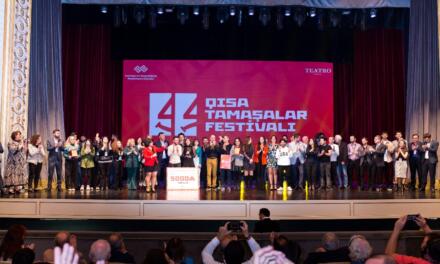Arts Council England is the investment, development and advocacy agency for the arts, museums, and libraries in England. We now require all organizations seeking regular, annual funding of £250,000 (€285,000) or more to have a digital strategy. Without that written strategy (and a plan for implementing it), nobody can get funding from the Arts Council.
Why have we decided to do this?
We have, over a number of years, tracked how arts and cultural organizations have developed their use of data and new technologies. Our Digital Culture survey has thrown up worrying results in some areas. For example, since 2013 there has been a decline in the proportion of organizations that see digital technology as important to their work in areas such as creation, distribution, and exhibition. The 2017 survey also shows that the majority of arts and cultural organizations still do not use data for important purposes such as understanding their audiences better through data analysis and profiling.
Many organizations in our sector think they are in competition for audiences with other publicly funded arts and cultural organizations. In reality, they are competing with a commercial entertainment industry that understands a lot more about who their audiences are and what they think about the content they are experiencing. In a time of shrinking public funding, we want to help the organizations we invest in to take advantage of the opportunities provided by new technologies – and the data associated with those technologies – to understand more about their audiences, make more innovative and relevant work, and build more resilient business models.
In a world in which the public experience more and more of their culture online, our fear is that many of our publicly funded theatres will lose their relevance, stuck in an analogue world, reaching fewer and fewer people. That is why we have decided to act and make it a condition of our funding that our larger theatres need digital strategies and delivery plans.
We hope that this will accelerate the use of new technologies in our theatres. Over the next few years, we expect to see significant progress in the following:
- the use of new technologies to innovate in artistic practice, both online and offline;
- the use of new technologies to create, distribute and share experiences with audiences online;
- the gathering, sharing and analyzing of data to help improve decision-making, enabling organizations to tailor offers to audiences and increase
We recognize that the theatres we invest in are at different stages of their digital journey. A good digital strategy needs to start with where the organization is today. It needs to be rooted in its creative mission. It must consider how new technologies can help achieve wider objectives and how the unique qualities of each theatre can best be supported by digital technology. Critically, it needs to be endorsed and led from the top of the organization. Too often in our experience, ‘digital’ is consigned to the marketing department. It is seen as a communications activity rather than a part of the DNA of a modern user-focused cultural organization.
A good digital strategy sets out how new technologies can help better deliver a theatre’s core artistic mission whilst also supporting all areas of its business – more innovative creative output, better experiences for audiences and access to new income streams. And it identifies what resources – people, money and specialist expertise – will be needed to deliver the strategy and reap the benefits.
A good digital strategy should also be appropriate to a theatre’s type and size, its available resources and where it is starting from digitally. If it is a small theatre or digital is not yet a major part of what it does, it might identify modest, achievable steps to start with and aim to become more ambitious over time. It will not set digital objectives that are too numerous or wide-ranging. It should focus instead on a few key areas to achieve measurable results with whatever resources are available and always an ambition for excellence. It will also identify what partners the theatre will work with to deliver the strategy.
Accompanying the strategy should be a digital plan: a document that defines in detail specific objectives, activities, targets, responsibilities, and deadlines for delivery. It should make clear who tracks progress against targets and when the plan will be reviewed. A regular reviewing process is important as digital aims evolve, driven both by the change in artistic and business aims and changes in the wider digital landscape. Review and evaluation should be guided by what the audience and other data are telling the theatre. This will ensure that activities and targets are realistic, sustainable and can generate good returns on investment. Digital can be a great medium for low-cost experimentation. Ideas can be tried out quickly and data gathered on what is effective.
In summary, effective digital strategies:
- are embedded in the organization and endorsed by, and led from, the very top;
- put users and audiences in the center, with decision-making assisted by audience and performance data;
- involve the people responsible for actions and for delivering strategic objectives in planning, objective setting, and monitoring progress;
- recognize the skills development, resource requirements and partnership approach necessary to make the strategy viable.
Working with specialist digital development agency The Space, we have developed guidelines to help theatres create a digital strategy that is suitable for them – whether they are small, experimental ensembles or large repertory theatres. These guidelines offer a structured way for an organization to think about where they are on their digital journey and where they want to get to.
To support our digital development ambitions, we also invest in a group of ‘sector support organizations’ that give advice to arts and cultural organizations on adopting and implementing their digital strategies. The Space, for example, provides training and one-to-one mentoring support, as well as opportunities for digital commissions. Later this year we plan to set up an Arts Council digital network, a group of specialist staff working from our offices across England to provide advice on best practices and broker introductions between the organizations we support and the tech sector. We will also develop a ‘digital maturity index’ to help organizations benchmark where they are now digitally and then track their progress.
Last but not least, we recognize that the Arts Council itself needs to change too. We have established a new Enterprise and Innovation department to lead our work in this area, staffed by people with a background in the commercial and tech sector. We need to lead by example and take theatres with us towards a future that will be fuelled by ever-more pervasive, and as yet unanticipated developments in digital technology.
This article originally appeared in European Theatre Lab on September 6th 2018 and has been reposted with permission.
Simon Mellor – Deputy Chief Executive Arts & Culture, Arts Council England
As Executive Board member of the Arts Council England he is responsible for national arts and cultural strategy. Mellor was previously General Director of the Manchester International Festival and the Chief Executive at Lyric Hammersmith. He has also been the producer founder of Gloria Theatre Company, Youth Arts Projects Coordinator for the Southbank Centre, Head of Education at Battersea Arts Centre and Co-Director of Pegasus Theatre in Oxford.
This post was written by the author in their personal capacity.The opinions expressed in this article are the author’s own and do not reflect the view of The Theatre Times, their staff or collaborators.
This post was written by Simon Mellor.
The views expressed here belong to the author and do not necessarily reflect our views and opinions.


















